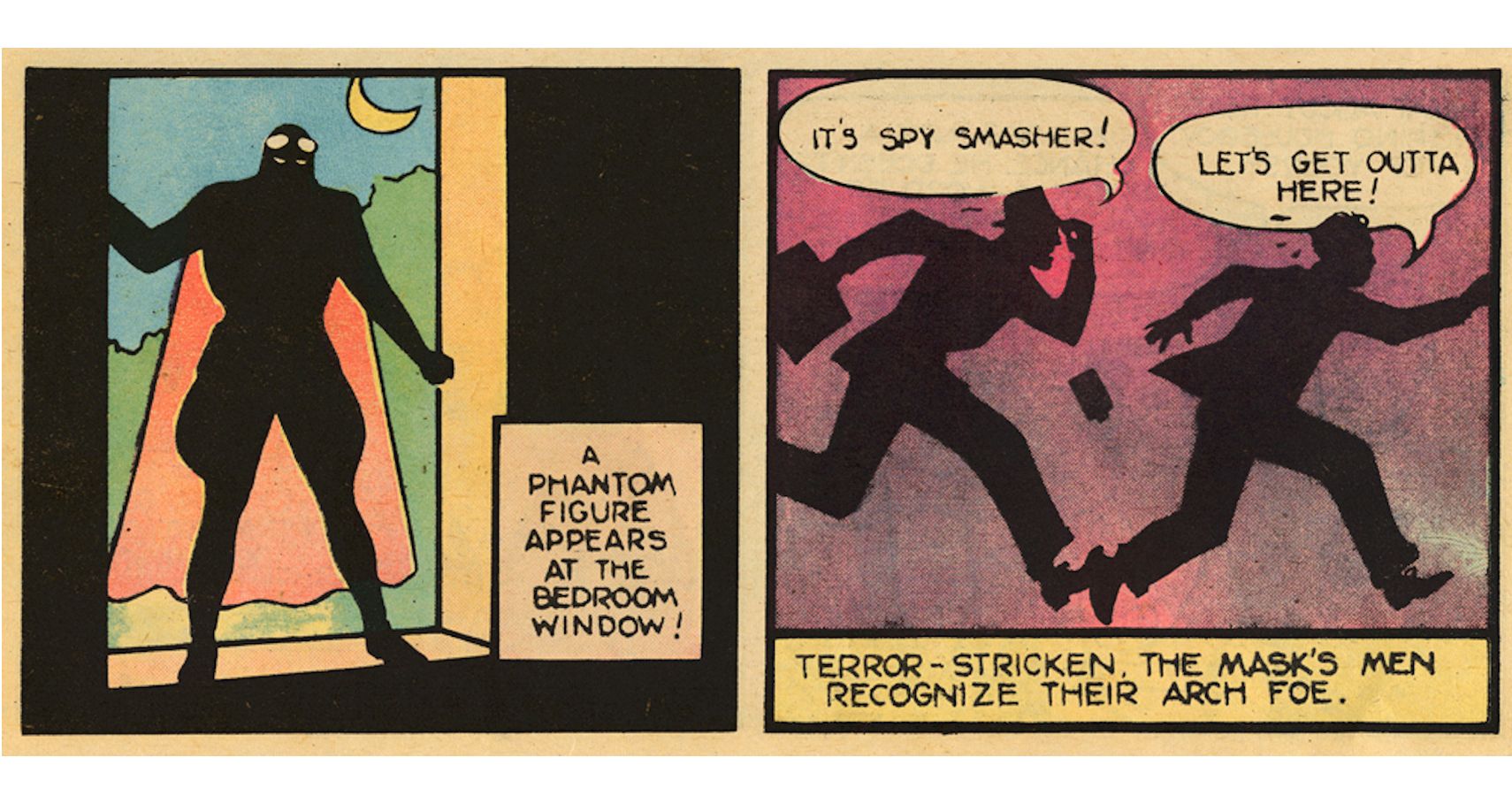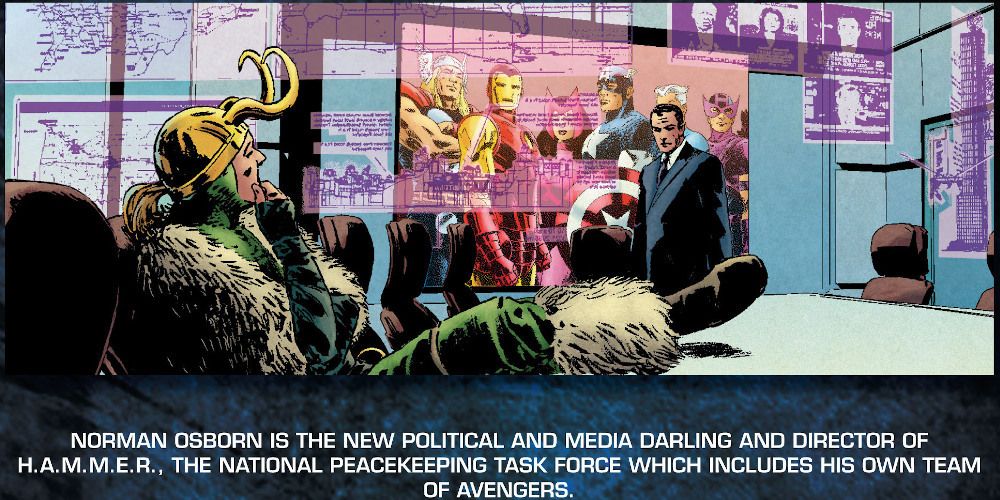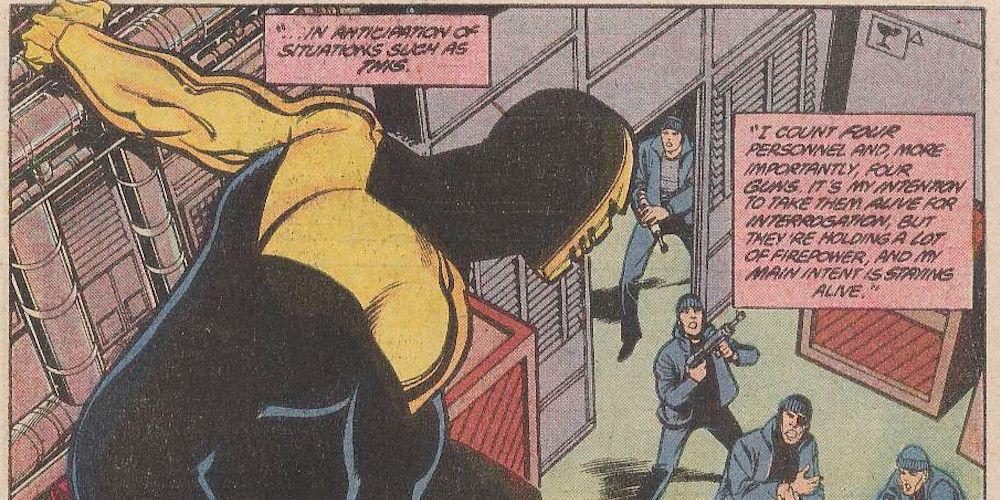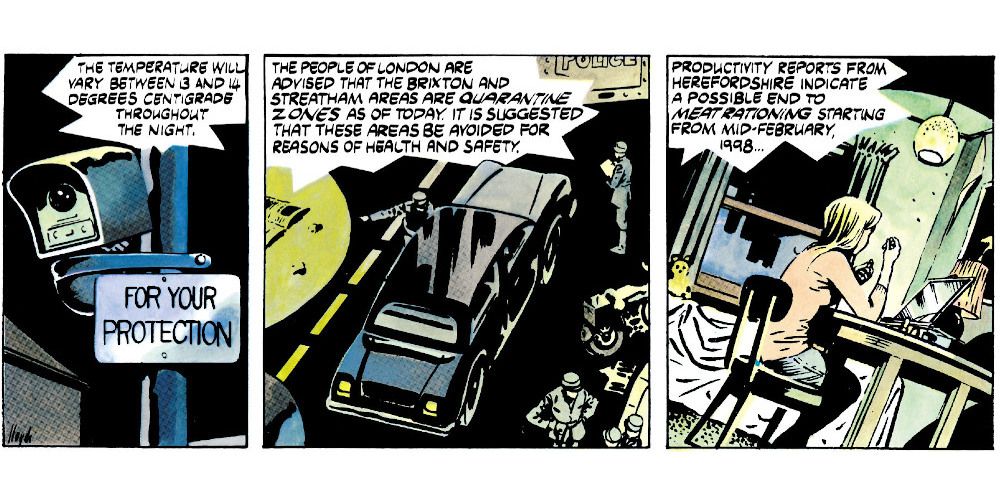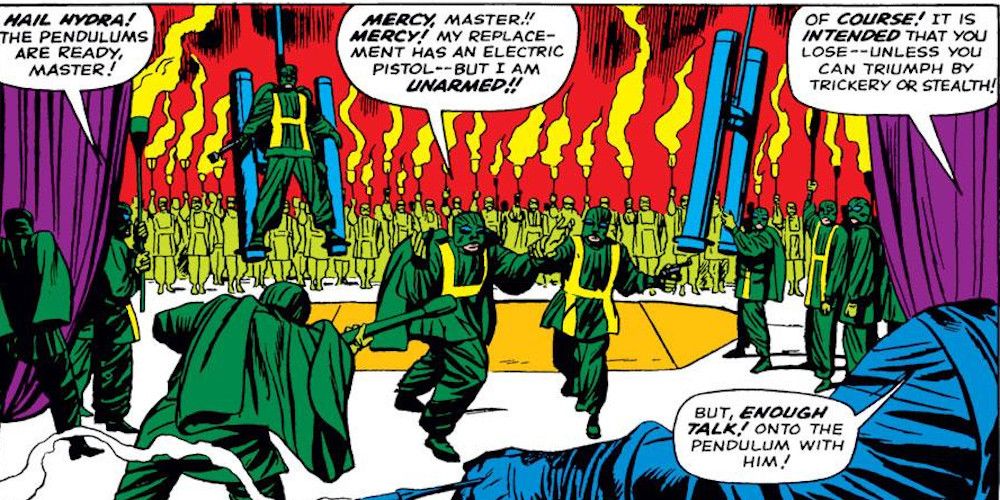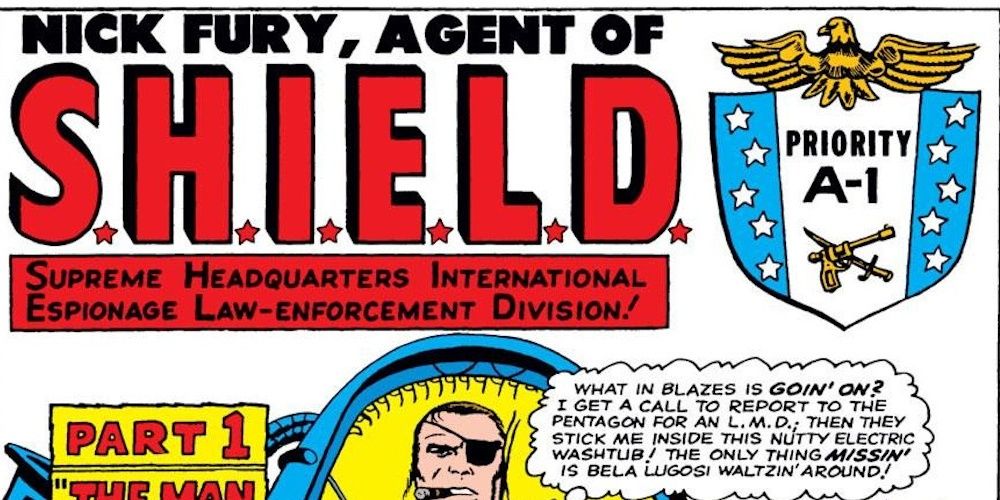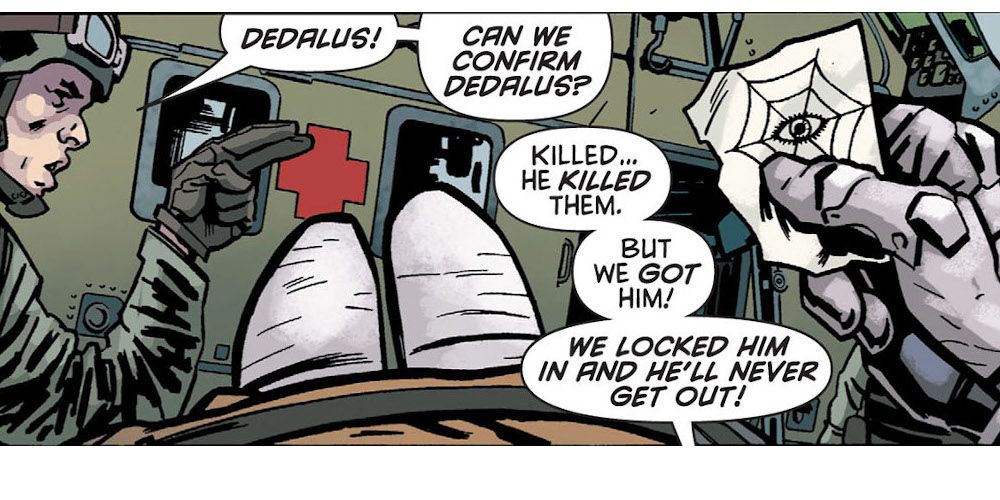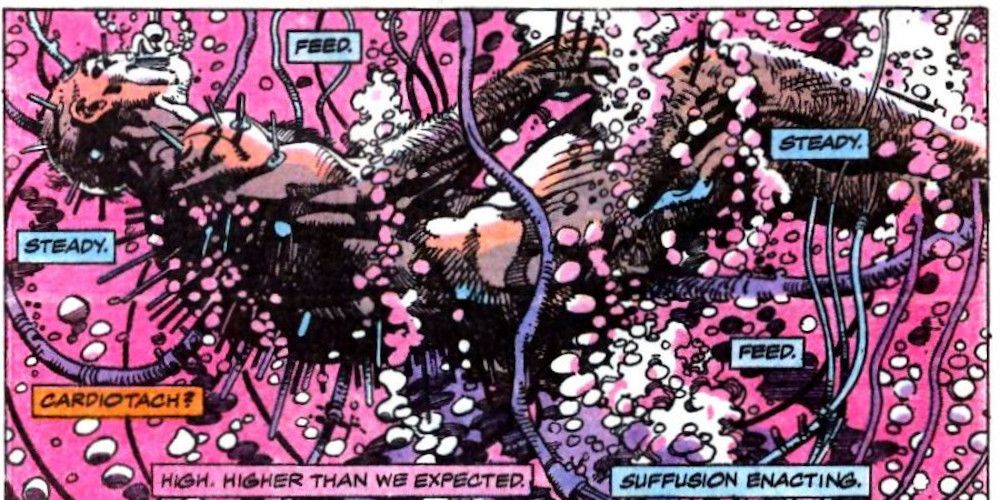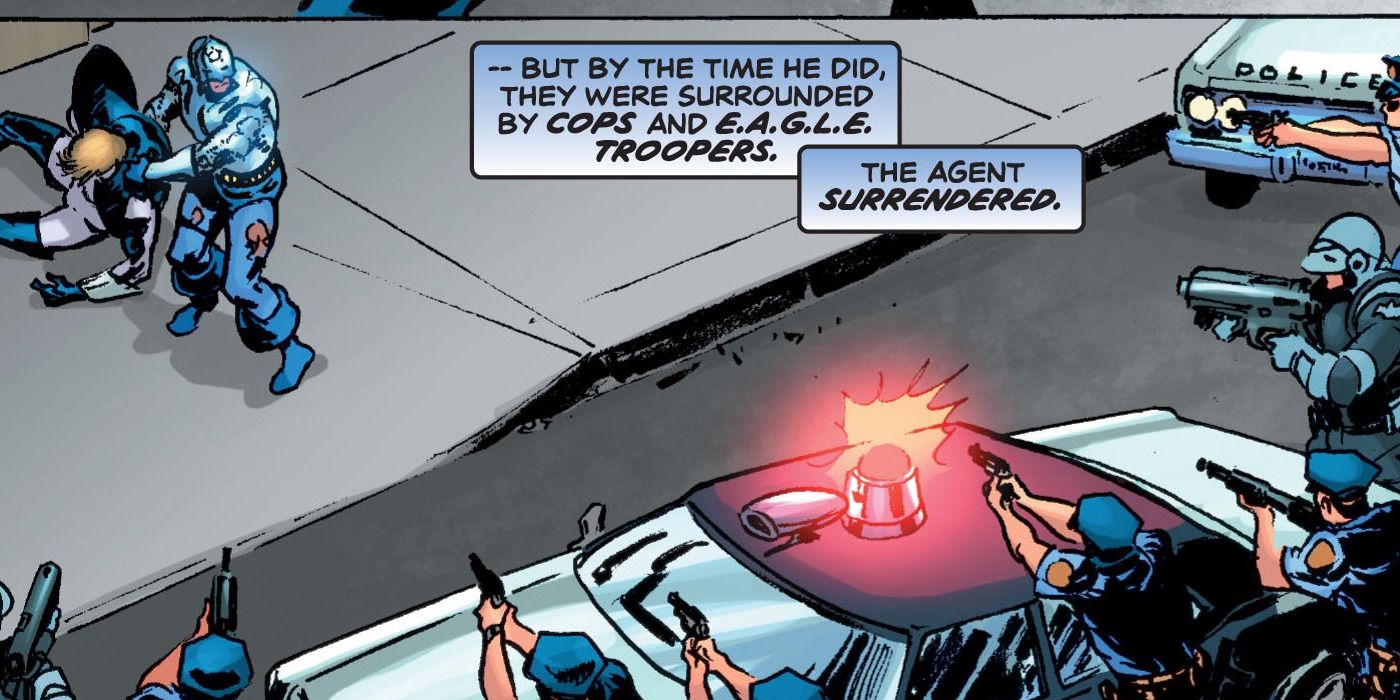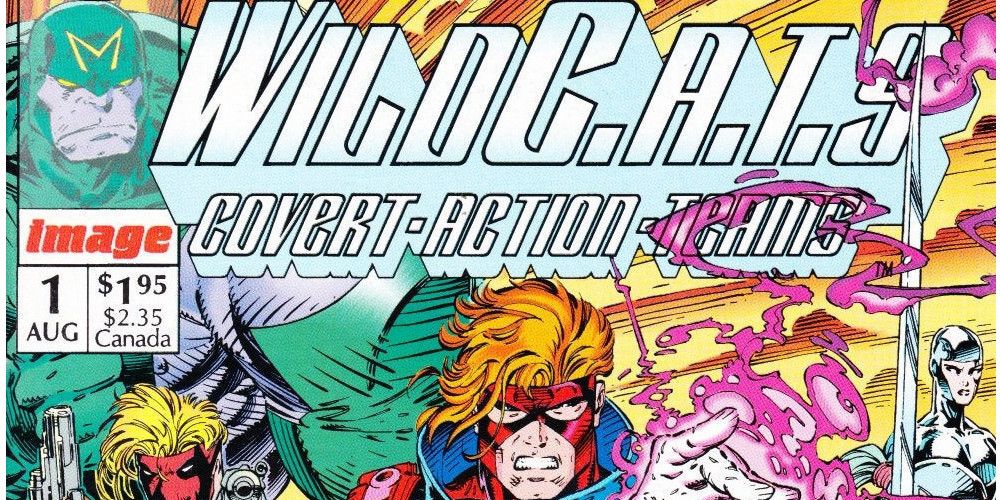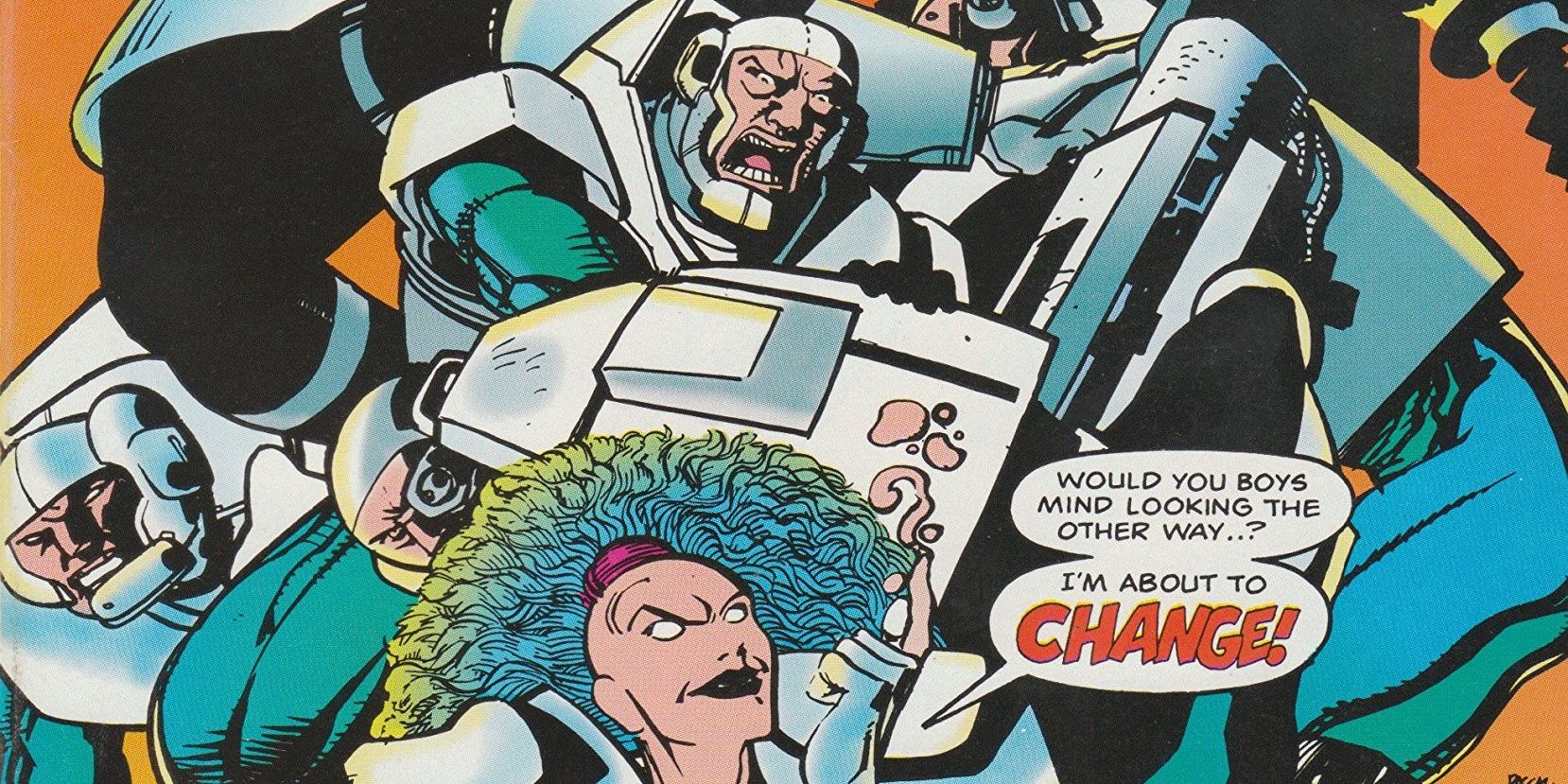For drama and intrigue, there's nothing better than a spy. Thrilling, heroic or villainous, spies, and the organizations they work for have been a staple of comic books for a long time.
One of the very first comic book heroes, first depicted in Whiz Comics #2 by Fawcett, was Spy Smasher, a wealthy detective from Virginia (not Gotham). So spies have been part of the fabric of comic books for a good long while. Some spy organizations have rich fictional histories, interesting characters, or powerful cultural resonance. On the other hand, others feel derivative, lazy, dull, or silly.
So here is a list of the Top 5 best organizations in comic books, followed by a Bottom 5 with some entries that might leave you scratching your head. Are they good guys or bad guys? With spies, sometimes it's hard to tell.
10 Best: H.A.M.M.E.R.
Though a spin-off of S.H.I.E.L.D. (with an entry of its own later in our list), H.A.M.M.E.R. deserves its own entry for its simple audacity. Founded by “noted humanitarian” Norman Osborne after the events of the Secret Invasion storyline and series, H.A.M.M.E.R. would continue to play a large role in almost three years' worth of Marvel Comics stories.
This spy and law-enforcement agency was Osborne's way of grabbing power for himself and even led to the creation of the Dark Avengers (who took over the Thunderbolts book) and Osborne's own armored persona, the Iron Patriot. More upfront than most behind-the-scenes spy agencies, H.A.M.M.E.R. earns its place on our list thanks to the fact that they were so confident in the work that they boldly never bothered to decide what their acronym meant.
9 Best: Checkmate
Making the first appearance in Action Comics #598 before moving to its own series, Checkmate's operatives adopt codenames based on chess pieces that reflect their position in the organization's hierarchy. As a piece of Task Force X, Amanda Waller was involved—because she's always involved in this stuff—serving as Checkmate's Queen.
Since the organization's debut, Checkmate has frequently popped up to cause trouble and be involved in general backroom shady dealing. They stay quiet and spy-like until sending their special agent knights to take care of business. Over the years, many DC characters, heroes and villains, have served Checkmate in some capacity. In addition to Waller and Stein, other Checkmate operatives have included Alan Scott (the Golden Age Green Lantern), Mister Terrific, Rocket Red, Thinker, and Count Vertigo.No doubt the pieces are out there lurking still, just waiting to be called onto the board.
8 Best: Norsefire
Though Norsefire was actually the ruling party in Alan Moore and David Lloyd's V for Vendetta, they had an extensive spy program referred to as the Eye and the Ear (and the Head, the Nose, the Mouth, and the Finger, too). The Eye and the Ear were responsible for visual and audio surveillance, using technology and human assets to keep tabs on the populace.
Born from the terrible nuclear destruction of a third World War, Norsefire convinced the people of the United Kingdom that security was possible only through oppressive restrictions and human rights abuses. The Eye and the Ear used their almost limitless power to crush dissent and unease. They were frighteningly effective, as all fascist regimes appear. Until, of course, V had his say.
7 Best: Hydra
The ultimate Marvel Comics bad guy, and the evil foil to SHIELD, Hydra also made its first appearance in Strange Tales #135, the same issue that SHIELD and a re-purposed Nick Fury made their debut. In the 55 years since its first publication, Hydra has been the sneaky, world-conquering best at being the worst. Using grand plans and small plots, Hydra has remained the biggest menace to all Marvel's heroes, even as some of its pieces, like the Secret Empire and Advanced Idea Mechanics, have spun off independently.
It doesn't matter if you hear it from a fanatic mob, a turncoat Cap, or Gary Shandling. Everyone fears those two little words: “Hail Hydra.”
6 Best: S.H.I.E.L.D.
S.H.I.E.L.D. is perhaps the most famous entry on this list thanks to multiple mentions in billion-dollar movie franchises, not to mention an ABC television series. Marvel's Supreme Headquarters, International Espionage, and Law-Enforcement Division, later Marvel's Strategic Hazard Intervention Espionage Logistics Directorate and later still Marvel's Strategic Homeland Intervention, Enforcement, and Logistics Division first appeared in Strange Tales # 135 in 1965.
The brainchild of Stan Lee and Jack Kirby, S.H.I.E.L.D., and their re-imagining of World War II hero Nick Fury as its top agent, sought to capitalize on the public's interest in spies and international espionage. After Lee and Kirby, Jim Steranko arrived and pushed the book's boundaries visually and won awards.
Through the years, S.H.I.E.L.D. would continue to be Marvel's premiere extra-governmental organization, most often facing off against Hydra. Today, we all know Samuel L. Jackson's depiction of Executive Director Fury, and the massive S.H.I.E.L.D. helicarriers he has at his disposal. And now for a sad collection of also-ran spy agencies.
5 Worst: Spyral
In the DC Universe, Spyral was created by the United Nations to do everything the United Nations can't do officially. Obsessed with webs and spider imagery, the organization specializes in red herrings, mind-washing, leaving actual calling cards, and other shady tricks. This much is obvious in the organization's first appearance, in Batman Incorporated #3. In that story, Batman learns that Spyral is often tasked with bringing down “troublesome superhumans.” But the calling card feels a little too Bond-villain.
Later, Dick Grayson, his Nightwing identity burned, would join Spyral as a way to spy on the spies.
4 Worst: Department K
Best known as the administrators of the Weapon X Program that messed with Wolverine created Deadpool and turned Wild Child into Weapon Omega. Canada's Department H also worked with spies and other covert organizations, including the C.I.A.
Other operatives known to work for Department K include the very '90s-looking-and-sounding Tigerstryke, Killspree, and Double Trouble. The '90s were tough on everyone. Even Canadians. Don't make the mistake of confusing Department K with Department H, the office of Canadians pencil-pushers who, even though they have their own sets of problems, were behind the always cool Alpha Flight program.
3 Worst: E.A.G.L.E.
From Kurt Busiek's Astro City, the Extranormal Activities Garrison for Law Enforcement performs the combined duties of SHIELD and Damage Control. Appropriate, since a lot of Astro City has its basis in classic comic books in one way or another.
The series never gets around to exploring the organization's inner workings as well as the group it's based on, leaving it just a bit of a boogeyman. And E.A.G.L.E.'s headquarters is called the Aerie. And its leader is Flannery Hawk. There is such a thing as too many bird references.
2 Worst: International Operations
As big and shady as a writer needs it to be, International Operations, from the WildCATS comic book series, spied and kept secrets and experimented and made deals with aliens and had a giant satellite space base. If you want it, they've got it, and if you need it, working with I.O. is like making a deal with the devil.
They monitor superpowered threats across the globe, interfering when necessary, but individuals' motivations are always cloudy. I.O. can't make the “Best” list because there's just not enough focus or history to make them interesting.I.O. started in the Image universe, and then made the move to DC when its creator, Jim Lee, made the move first.
1 Worst: D.U.C.K.
This a deep cut. The Department of Unknown and Covert Knowledge first appeared in the Marvel UK comic book Plasmer #1. Then it made its last appearance in Plasmer #4 because that's where it, and the short-lived series from the early 90s, was stashed away, never to be seen again. But D.U.C.K.'s legacy extends beyond the few comic pages it graced.
Plasmer, published by Defiant Comics and former Marvel Editor-in-Chief Jim Shooter, seemed too close to the Marvel Comics book Plasma. Though Defiant changed the name of their comic, Marvel continued with its lawsuit. And even though Defiant won, the lawsuit burned through their money reserves and were forced to stop publishing. Who did you work for, really, D.U.C.K.?

